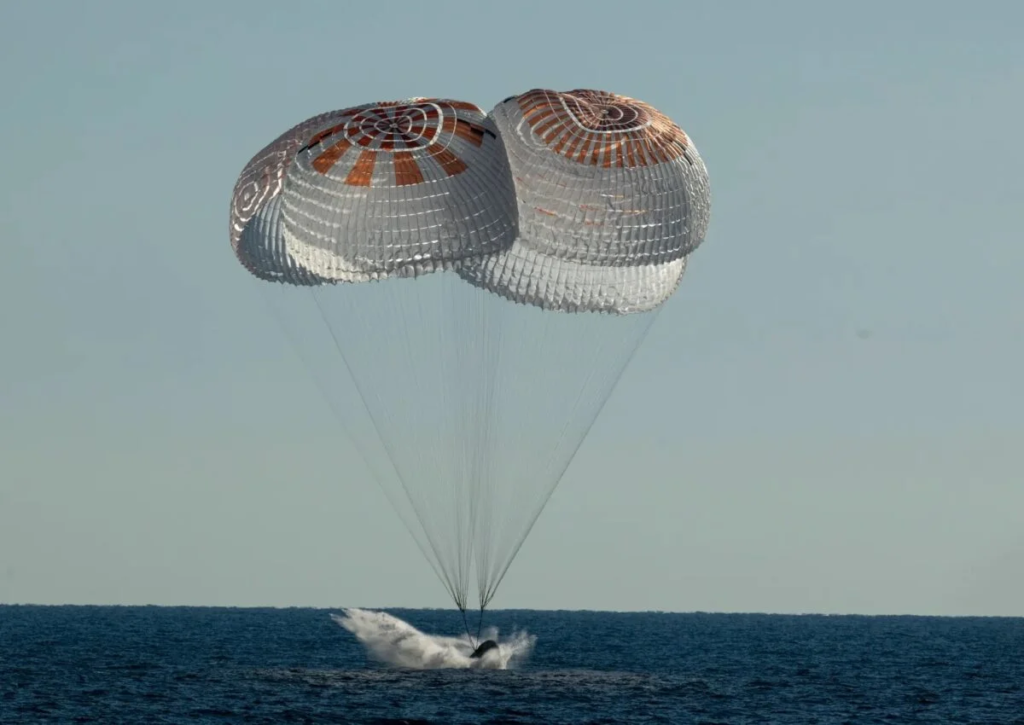
When it comes to space missions, splashdown might just be one of the most exciting moments. After months of training, weeks in space, and sometimes grueling re-entry conditions, astronauts complete their journey by splashing down into the ocean. It’s the thrilling final step in an adventure that brings explorers back from orbit to the familiarity of Earth’s waters, marking the end of yet another successful mission.
The History of Splashdown Landings
Splashdown landings have a history as old as space exploration itself. During the Apollo era, splashdowns were the standard, with space capsules descending into the Pacific Ocean and being recovered by waiting naval ships. This era set the stage for splashdown as an iconic part of spaceflight, symbolizing the successful return of brave astronauts from their missions. Seeing the Apollo capsules descend under massive parachutes, with a whole recovery team waiting, brought relief and pride to audiences worldwide.
The tradition continued with later missions, and while there was a period when NASA shifted to land-based returns with the Space Shuttle, splashdowns have made a comeback with the new wave of space travel. SpaceX’s Crew Dragon capsule, for instance, has brought back the splashdown, and it’s just as captivating today as it was decades ago.
Why Splashdown? The Advantages of a Water Landing
So, why splashdown? There’s a solid reason behind choosing water as the landing site for returning spacecraft. First, water offers a natural cushion for landing, which reduces the impact on both the spacecraft and its crew. Ocean splashdowns minimize the risk of injury and protect the integrity of the capsule. Additionally, vast oceans offer more landing options, making it easier to navigate potential weather challenges or unexpected shifts in trajectory.
With advancements in navigation and precise parachute deployment, splashdown zones can be calculated with impressive accuracy. This makes water landings even safer, allowing rescue and recovery teams to be in position and ready to assist astronauts within minutes of touchdown. The excitement of splashdown comes with a careful balance of planning and timing, where every second counts.
The Role of Technology in Modern Missions
In today’s splashdown missions, technology plays a huge role in improving safety and efficiency. Modern capsules, like SpaceX’s Crew Dragon, are equipped with heat shields that protect them during re-entry, allowing for safer descents through Earth’s atmosphere. The precision of these capsules is unmatched, allowing them to pinpoint exact splashdown sites with remarkable accuracy.
Parachutes, too, have seen incredible advancements. Parachute systems today are thoroughly tested, with redundant canopies to ensure that any failure still results in a safe landing. This was demonstrated with Crew Dragon’s recent splashdowns, where parachutes deployed smoothly, enabling controlled and gentle water landings that were a far cry from the bumpy touchdowns of earlier missions.
The Thrilling Moment of Splashdown Recovery
Once a capsule splashes down, the real action begins. Rescue teams, often in helicopters or ships, race to the capsule’s location. Their goal is to get the astronauts out and into medical checkups as quickly as possible. Even though astronauts undergo re-entry training and preparations, returning to Earth’s gravity is a shock to the system. Getting them on stable ground—or a stable ship, in this case—helps prevent disorientation and ensures their health after the intense journey.
Crew recovery is a fascinating part of splashdown, with teams coordinating each step to safely retrieve both the astronauts and the capsule. Whether it’s gently hoisting the capsule onto a recovery ship or providing immediate medical evaluations, splashdown recovery is a carefully orchestrated process that prioritizes safety and precision.
Future of Space Missions
With the renewed interest in space exploration, splashdown landings are here to stay. NASA, in partnership with private companies like SpaceX, has reintroduced splashdown landings as a reliable return option. For the next era of space travel, including missions to the Moon and Mars, splashdowns are likely to play a key role. As space capsules continue to evolve, their landing systems will only get safer and more efficient.
Splashdowns represent more than just the end of a mission. They’re a reminder of the courage it takes to explore space and the relief and joy of returning home. From Apollo to Crew Dragon, splashdowns capture the heart-stopping, high-stakes nature of space travel, leaving us eagerly waiting for the next capsule to plunge into Earth’s waters.
In the vast journey of space exploration, splashdown is where it all comes full circle, bringing our explorers back from the cosmos, back to Earth.

